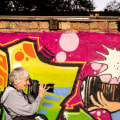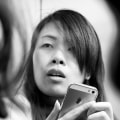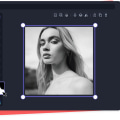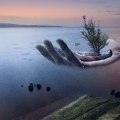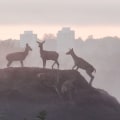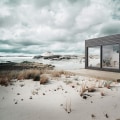Street art photography is a unique and exciting form of art, allowing photographers to capture the beauty of the urban environment in an artistic way. But capturing good street art photos isn't always easy – the lighting can be tricky, and getting the right composition and angle can be challenging. One of the keys to success is combining natural light with flash to create stunning images. By understanding how natural light and flash work together, you can take your street art photography to the next level.
In this article, we'll explore how to use natural light and flash when shooting street art photography. We'll look at different lighting techniques, and discuss how to choose the right equipment for your needs. We'll also provide some tips to help you get the best results when combining natural light with flash.
Tips for Success
Experimentation is key when combining natural light with flash for street art photography. It can be difficult to predict what kind of effect each lighting combination will create, so photographers should be prepared to experiment with different combinations to find the one that works best for their particular shot.It is important to remember that different types of light, such as sunlight, window light, and artificial lighting, will interact differently with each other. Experimenting with different combinations can also help you create unique and dramatic images that are sure to stand out. When experimenting with natural light and flash, it is important to think about the overall composition of the image. You should consider the angle of the light, the direction of the shadows, and the intensity of the light. Natural light can create soft, subtle images while flash can be used to create more contrast and drama.
When using flash, be sure to adjust the power level to ensure that your subject is properly lit. When experimenting with different lighting combinations, it is important to take test shots to see what effect you are getting. This will help you understand the results and make adjustments accordingly. Be sure to take notes on each image you take so you can refer back to them if needed. Additionally, it is important to remember that experimentation is a part of the creative process and that it can take some time to find the right combination of natural light and flash.
Combining Natural Light with Flash
Fill-FlashFill-flash is a technique that uses a flash to supplement existing light in a scene.It helps to fill in shadows and add depth to an image. This is especially useful when shooting street art as the artist’s work can be easily lost in dark shadows. To use fill-flash, you need to set your flash to its lowest power setting, and then adjust the output of your flash to match the light levels in the scene. This will result in a more balanced and natural-looking image.
Backlighting
Backlighting is a technique that uses a flash to light up the background behind your subject.This can be used to make the street art stand out from the environment and draw attention to the artwork. To achieve this effect, you will need to position your flash off-camera and behind the street art. The flash should be set to its lowest power setting, and then adjusted to match the light levels in the scene. This will result in a more dramatic look, with the subject appearing to be lit from behind.
Understanding Natural Light
When it comes to street art photography, understanding natural light is essential.The direction and intensity of the light can have a huge impact on the outcome of your photos. To get the best results, it is important to analyze the light source before you start shooting. When analyzing the light, consider the direction it is coming from and the angle of incidence. This will help you determine where shadows will fall and how they will interact with your subject.
You should also be aware of the intensity of the light, as this will affect the brightness and contrast of your image. To make sure you get the most out of natural light, you should experiment with different angles, distances and intensities. This can help you create a more dynamic image with a range of tones and textures. For example, a low-angle light can create dramatic shadows that add depth to your composition.
On the other hand, a high-angle light can create a more uniform light that is great for showing off subtle details. You can also use reflectors or diffusers to manipulate natural light. Reflectors can be used to redirect or intensify light, while diffusers can be used to soften harsh shadows. Experimenting with these tools can help you achieve a wide range of effects.
Experimenting with Flash
Flash is an invaluable tool for street art photography.It can be used to add contrast, depth, and drama to an image, making it stand out from the crowd. Flash can also be used to provide a directional source of light, creating a more three-dimensional look to your photo. When using flash, it is important to experiment with different settings and power levels to find the ideal balance between natural light and artificial light. Start by setting up your camera and adjusting the exposure settings to compensate for the extra light from the flash.
Then experiment with the flash power and angle to see what works best for your scene. Using different colors of gels can add a unique and creative touch to your images. Gels can be used to create colored lighting effects, or to add color to shadow areas. Experiment with different colors and combinations to see what works best for your photos.
Another way to add contrast and depth is by using a reflector. A reflector will bounce light back into your scene, creating a softer, more even light that will add a three-dimensional look to your photos. By experimenting with different lighting techniques and combining natural light with flash, you can create beautiful and dynamic images that capture the essence of your subject. With practice, you'll be able to master the art of street art photography in no time!Combining natural light with flash is a powerful tool for creating beautiful and dynamic street art photographs.
With some experimentation and understanding of both natural light and flash, you can create stunning images that capture the essence of your subject. By combining these two sources of light, you can add drama, contrast, and creativity to your images in unique ways. With practice, patience, and an eye for detail, you can become a master of lighting techniques for street art photography.


